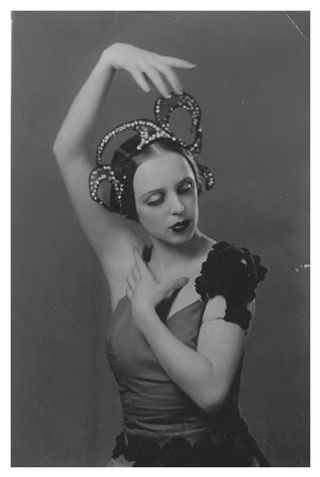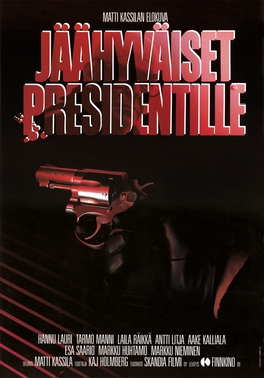Related Research Articles
The background of the Winter War covers the period before the outbreak of the Winter War between Finland and the Soviet Union (1939–1940), which stretches from the Finnish Declaration of Independence in 1917 to the Soviet-Finnish negotiations in 1938–1939.

Jussi Niinistö is a Finnish politician and a former Minister of Defence and a former member of Finnish Parliament, representing the Finns Party 2011–2017 and Blue Reform since 2017. By occupation he is a military historian, a docent of Finnish history in the University of Helsinki and a docent of military history in the Finnish National Defence University. In 2013 he was elected as the first vice-chairman of the True Finns, but lost his seat in 2017.

Finland's overall corruption is relatively low, according to public opinion and global indexes and standards. The 2022 Corruption Perceptions Index released by Transparency International scored Finland at 87 on a scale from 0 to 100. When ranked by score, Finland shared second place with New Zealand among the 180 countries in the Index, where the country or countries ranked first are perceived to have the most honest public sector. For comparison, the best score was 90, the worst score was 12 and the average was 43.

The Stadin Derby, or The Helsinki Derby, is the name for a Helsinki association football fixture played between HIFK Fotboll and HJK Helsinki. The name of the derby derives from the common slang word nickname for Helsinki (Stadi), widely used by the locals. Both the teams play at the highest level of football in Finland, in Veikkausliiga. Before 2015, the clubs had not faced each other at the highest level since 1972 when HIFK got relegated from the top league, which was then known as Mestaruussarja.

Finland uses Eastern European Time (EET) during the winter as standard time and Eastern European Summer Time (EEST) during the summer as daylight saving time. EET is two hours ahead of coordinated universal time (UTC+02:00) and EEST is three hours ahead of coordinated universal time (UTC+03:00). Finland adopted EET on 30 April 1921, and has observed daylight saving time in its current alignment since 1981 by advancing the clock forward one hour at 03:00 EET on the last Sunday in March and back at 04:00 EET on the last Sunday in October, doing so an hour earlier for the first two years.

Väinö David Lassila was a Finnish physician, anatomist and anthropologist who was a Professor of Anatomy at the University of Helsinki. He was the leading authority of the Finnish racial studies, but since the mid-1930s, Lassila dissociated himself from racial theories and became one of the prominent figures of Finland's human rights movement.
Anarchism in Finland dates back to the early revolutionary movements of the 20th century, seeing organized activity begin in the 1960s.

In Finland, the far right was strongest in 1920–1940 when the Academic Karelia Society, Lapua Movement, Patriotic People's Movement (IKL) and Export Peace operated in the country and had hundreds of thousands of members. In addition to these dominant far-right and fascist organizations, smaller Nazi parties operated as well.
Toivo Tuomas Savolainen, later Karanko was a Finnish Jäger captain and a journalist.
Niilo Vilho Rauvala was a Finnish engineer and the chairman of the far-right Lalli Alliance of Finland and the Nazi Party of Finnish Labor in the 1930s and 1940s.
The Lalli Alliance of Finland was a Finnish far-right organization founded in 1929. The main themes of the Lalli Alliance were Finnish language nationalism and opposition to communism, parliamentarism and democracy. The aim of the organization was a coup and the appointment of a dictator to lead Finland. The most significant achievement of the organization is considered to be that the Lalli Alliance has been considered to have acted as a precursor to the Lapua movement.

Hyhky is a district in the northwestern part of Tampere, Finland. It is bordered on the north by Lielahti, on the east by Ala-Pispala, on the south by Kaarila and on the west by Epilä.

Lucia Nifontova-Saurama, better known as Lucia Nifontova, was a Finnish ballet dancer and Finland’s first prima ballerina assoluta. In the 1930s and 40s she and her partner Arvo Martikainen were the leading dancers in Finland and among the foremost artists in Finnish ballet of all time periods. Her performances of Odette and Odile in Swan Lake were especially noted for their artistic accomplishment and emotional interpretation.

Kaakinmaa is a district in Tampere, Finland, located in the city center. It includes the area south of Pyynikki Church Park between the Hämeenpuisto park and the Mariankatu street. To the south, the area extends to Eteläpuisto on the shores of Lake Pyhäjärvi. The neighboring parts of the city are Nalkala in the east, Amuri in the north and Pyynikki and Pyynikinrinne in the west. Sometimes Kaakinmaa is incorrectly considered to belong to Pyynikki and Pyynikinrinne; however, Kaakinmaa has its own district.
Events in the year 2022 in Finland.

Farewell, Mr. President is a 1987 Finnish action thriller film directed by Matti Kassila and starring Hannu Lauri. It tells the story of a disgruntled waiter planning to assassinate the Finnish President. The film is based on a 1979 thriller novel of the same name by Pentti Kirstilä. Unlike contemporary Finnish films, the film is a thrilling film strongly influenced by post-classic Hollywood films.
Yrjö Wilhelm Jalander was a Finnish pharmacist and the founder of Oy Merijal Ab and the pharmaceutical factory Leon.
John Rosberg was a Finnish engineer and technical director of the Helsinki Telephone Association who was involved in far-right activities in the 1930s and 1940s.
Eugenie Lisitzin was a Finnish physical oceanographer active in the mid-20th century. She was the first woman in Finland to earn a PhD in physics (1938) and join the Finnish Society of Sciences and Letters (1960). She also was the first acting director of a scientific department of the Finnish government.
References
- ↑ Antti Salamaan kuolinilmoitus. Helsingin Sanomat, 19.10.1935, s. 1. HS Aikakone (vain tilaajille)
- 1 2 Antti Salomaan entisyys, Aamulehti 11.12.1929 nro 338, s. 7, Kansalliskirjaston Digitoidut aineistot
- 1 2 3 Aapo Roselius, Oula Silvennoinen, Marko Tikka (10 February 2016). Suomalaiset fasistit. WSOY. ISBN 9789510417058.
{{cite book}}: CS1 maint: multiple names: authors list (link) - ↑ Kirjatakavarikko Helsingissä, Käkisalmen Sanomat, 05.01.1935, nro 2, s. 1, Kansalliskirjaston digitaaliset aineistot